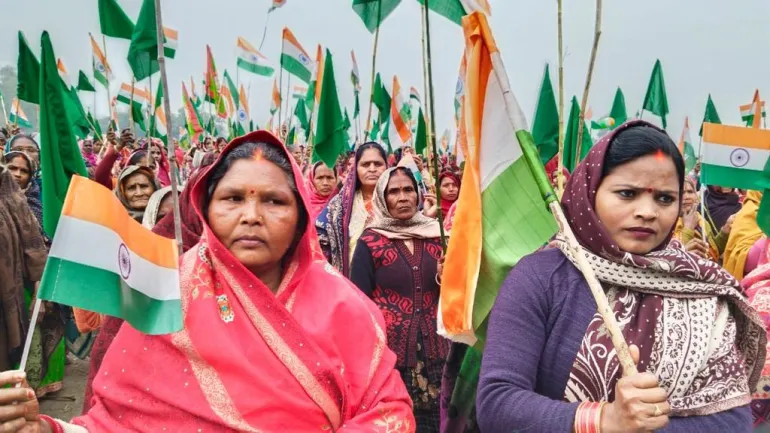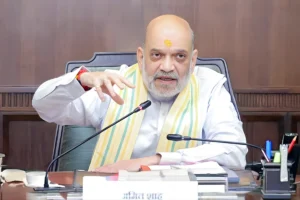
Villagers at protest
Tens of thousands of people residing in eight villages of Azamgarh call their protest a “fight for survival” and it looks like one.
Azamgarh is about 260km (160 miles) from Uttar Pradesh’s capital Lucknow and nearly 800km (500 miles) from the national capital of New Delhi.
On 26 January 2023, as India celebrated its 74th Republic Day which marks the adoption of its constitution in 1950, hundreds of villagers were protesting at Khiria Bagh park.
There was an air of desperation at the park. Children had skipped school, women left their chores half-done, daily wage workers who had not earned for months, farmers forced to postpone weeding of their crops – all stood under the sea of tricolours waving over their heads, protesting against the land acquisition for the proposed international airport at Azamgarh.
UP Chief Minister Yogi Adityanath’s announcement
In 2004, an airstrip was built in this eastern district of Uttar Pradesh. It was not used until November 2018 when state Chief Minister Yogi Adityanath announced its expansion and building of an international airport under an ambitious scheme aimed at upgrading India’s underserved air routes.
A budget of nearly $2.4m was allocated the following year for the proposed airport. According to the statements by Vishal Bharadwaj, the district magistrate of Azamgarh, about 270 hectares (670 acres) of land were meant to be acquired from eight villages – Gadanpur, Hichchanpatti, Jigna Karmanpur, Jamua Hariram, Jamua Jolha, Hasanpur, Kadipur Harikesh, Jehra Pipri, Manduri, and Baldev Manduri for the project.
India’s Land Acquisition Act, 2013 recommends a social impact assessment before any land is acquired by the government. After the local government’s approval of the project, a notification regarding the acquisition is published in the official gazette and in at least two local newspapers.
Since then, the area has been on a boil.
The elected members of local village councils are then notified of the proposed acquisition, and at least 60 days are given to people to raise their objections. After the physical survey of the land, claims regarding the acquisition are addressed and a report is submitted to the government.
Residents say at least 20 people from the eight villages, including seven women, have succumbed to the shock and pain of losing their land and livelihoods since October. The area is also the basin of the Tamsa River and is known for its diverse crops, including mangoes, high-quality pulses, jackfruit, potato, and pigeon peas.
Also read: Natasha Perianayagam Named ‘World’s Brightest’ Student By Johns Hopkins For Second Consecutive Year
To read more such news, download Bharat Express news apps


















